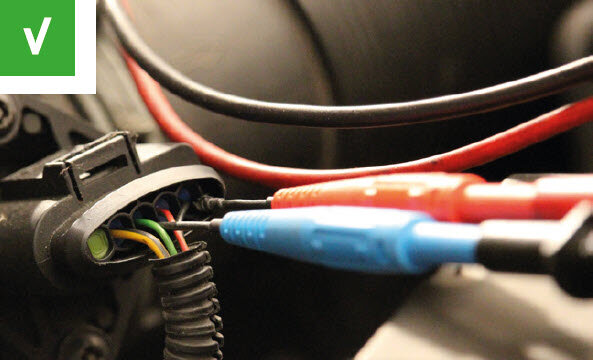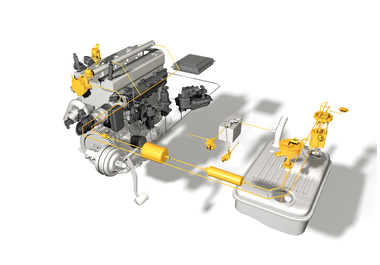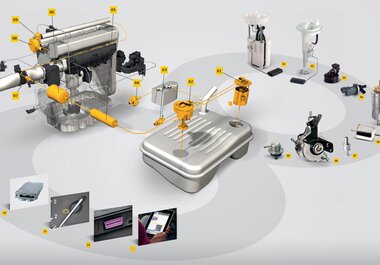
In the event of problems with fuel pumps: Check contact
Information on diagnostics
Fuel pump no longer working? Before replacing a fuel pump, you should check the electrical contacts. Often it is not broken and only the connections are faulty. How are the system pressure and volumetric flow of the fuel pump measured? Where exactly is the voltage at the fuel pump measured? This article gives you the answers.
In the event of problems in the fuel system, the system pressure and volumetric flow of the fuel pump should be measured first. If the measured values do not match the manufacturer's specifications, it is sometimes the case that the supposedly faulty fuel pump is replaced with a new one prematurely.
Before you replace a pump, you should ensure that a corroded electrical connection is not the cause of loss of power. Depending on the flow rate and system pressure, the current consumption of a fuel pump is 5 – 8 amperes or more. In the case of such high currents, clean and reliable contact points are important, since any type of corrosion or poor contacts increase the ohmic resistance across the contact.
However, increased resistance necessarily means a drop in voltage at the fuel pump. The typical circuit of a fuel pump in Fig. 1 shows a number of detachable connections due to screwed-in or plugged-in contacts. In addition, there are switching contacts within the ignition switch and the fuel pump relay as well as possible additional installations in the system, such as anti-theft devices.
Each of these contacts may have increased resistance due to oxidation, corrosion and an inadequate connection. This results in a undesired drop in voltage in this circuit. A drop in voltage may result in lack of performance of the fuel pump. The consequences are a reduction in pressure and flow rate.
01 Battery
02 Ignition switch
03 Fuel pump fuse
04 Pump relay
05 Pump relay control (to the engine control unit)
06 Fuel pump
c = Contacts (plugged in, screwed in)
|
RECOMMENDED PROCEDURE:
- Determine system pressure and flow rate
- Measure drop in voltage at the fuel pump: with the plug plugged in, connect the measuring instrument with the corresponding measuring tips to the rear of the plug (Fig. 3). Never "puncture" the cables (Fig. 4)!
- A voltage of at least 12.5 – 13.0 volts must be present when the engine and pump are running.
- If the measured voltage at the terminals or the plug of the pump is significantly lower than the on-board voltage, e.g. lower than 11 volts, there is a malfunction.
- In this case, check the condition of all contacts in the circuit, e.g. to see whether corrosion is present at the contacts (Fig. 5).
NOTE
In modern vehicles that are equipped with a "regulated" or "demand-based" fuel supply, the fuel pump is actuated by its own control unit with a pulse width modulation signal. A conventional digital multimeter is not sufficient to test these types of systems, as you simply measure the average voltage over a period here. In this case, you need an oscilloscope.


